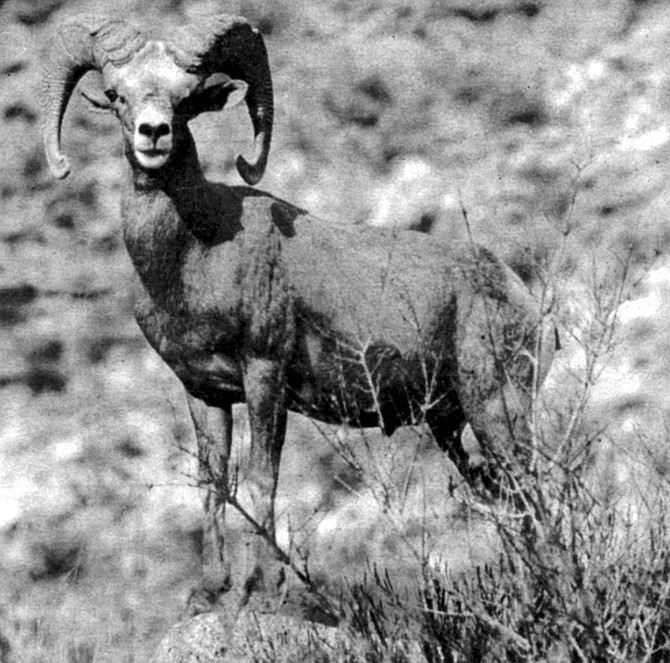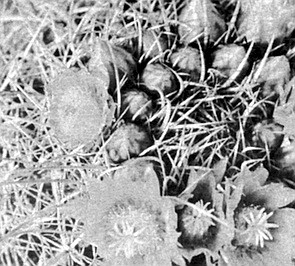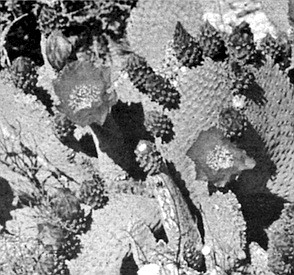 Facebook
Facebook
 X
X
 Instagram
Instagram
 TikTok
TikTok
 Youtube
Youtube

“Inholding” is not a household term for many of us. The word means privately owned parcels of land within the boundaries of a public preserve. Think of lacunae in a precious manuscript page. Think of Swiss cheese.

The goal of the Anza-Borrego Foundation is to fill in critical missing pieces of the Anza-Borrego Desert State Park by raising funds for acquisitions. Since 1967, it has purchased and transferred to the park over 24,000 acres of fragile desert habitat.
This is arid wilderness where you may catch a glimpse of a golden eagle on the wing or watch the dust wake of a roadrunner. You may also spot a member of the endangered peninsular bighorn sheep; males sport distinctive horns, like massive curled cornucopias (Borrego is Spanish for “bighorn”). Other residents include the swift-footed kit fox, long-eared mule deer, desert iguana, mountain lion, and ingeniously designed chuckwalla. When frightened, a chuckwalla retreats into its hole and inflates its lizard lungs with air, increasing its size so much that it can’t be extracted — nature’s own ship-in-a-bottle.

But unless visitors know the park well or carry detailed maps, they would be unwise to venture far from vehicles or marked highways and roads. There are 500 miles of them, and 110 miles of riding and hiking trails. Getting lost would be remarkably easy. So during Anza-Borrego Foundation Week, March 11-19, this land trust has sponsored a series of nine guided walks, nature hikes, and auto tours in cooperation with California State Parks.
It’s a way to introduce new visitors to the vast preserve, 600,000 acres in total, which is spread across parts of three counties — eastern San Diego, Imperial, and Riverside. Tours are led by wildlife biologists, geologists, ecologists, and authors.
Park Ranger Chris Smith, a desert geologist, will lead a half-day auto tour and hike through Canyon Sin Nombre (“Canyon Without Name”), with stops at Big Mud Cave and Diablo Dropoff on Arroyo Seco del Diablo. “We’ll see some ravens, some red-tailed hawks. A coyote is possible,” he says. He’s less hopeful about badgers, not because they aren’t there, but because they are stealthy as well as nocturnal. “I’ve only seen them myself a couple of times,” says Smith, who has been a ranger for nearly 16 years and whose hobby is photography.
Lichens that grow in the desert are one of his recent photo subjects. They’re not a life form readily associated with badlands. But Smith has found them “in the shaded areas, often unnoticed, unless you know where to look.” He suggests that people bring cameras for close-ups and for the long view of spectacular geological formations — “contortions” sculpted by air currents and the effects of three to five million years.
For the hike into Big Mud Cave a flashlight may come in handy, although most light will be provided by natural “skylights,” says Smith. Half a mile underground, participants will see more unusual earth formations, “very silty mudstone that has been altered and twisted” in dramatically beautiful ways. The silt is a reminder that the region wasn’t always a desert.
Fossilized remains, from microscopic plant pollen to mammoth elephants, tell the ancient story. One reason March was chosen for Anza-Borrego Foundation Week is because wildflowers, which begin to bloom in January, peak this month.
The foundation charges a fee for the tour; it goes toward the purchase of more inholdings. Smith says most are “not marked, not defined, not fenced.” But some owners, particularly near State Highway 78, have built “structures” — homes. And when park visitors see them, they get “perturbed," although the owners certainly have the right to be there. “Acquiring those pieces is a slow process, but,” Smith predicts with conviction, “it’ll all be complete in 30 to 40 years.”
The estimated length of Smith’s tour, starting Sunday at mid-morning, is four hours. It includes a stop for lunch. Bring your own, as well as plenty of water. Hats and sunscreen, too. Meet at the Carrizon Badlands overlook at the interpretive monument on County Highway S-2. It’s 34.5 miles from Scissors Crossing (intersection of County Highway S-2 and State Highway 78). Wear sturdy hiking boots. A four-wheel-drive vehicle in good working order is required. Car pooling is possible. Smith expects to handle a caravan of 30.
Call for reservations. Already sold out is a rare opportunity to visit Carrizo Gorge and the Goat Canyon Trestle, an area normally closed to the public. But names are being taken for a new tour to be scheduled some time in April.


“Inholding” is not a household term for many of us. The word means privately owned parcels of land within the boundaries of a public preserve. Think of lacunae in a precious manuscript page. Think of Swiss cheese.

The goal of the Anza-Borrego Foundation is to fill in critical missing pieces of the Anza-Borrego Desert State Park by raising funds for acquisitions. Since 1967, it has purchased and transferred to the park over 24,000 acres of fragile desert habitat.
This is arid wilderness where you may catch a glimpse of a golden eagle on the wing or watch the dust wake of a roadrunner. You may also spot a member of the endangered peninsular bighorn sheep; males sport distinctive horns, like massive curled cornucopias (Borrego is Spanish for “bighorn”). Other residents include the swift-footed kit fox, long-eared mule deer, desert iguana, mountain lion, and ingeniously designed chuckwalla. When frightened, a chuckwalla retreats into its hole and inflates its lizard lungs with air, increasing its size so much that it can’t be extracted — nature’s own ship-in-a-bottle.

But unless visitors know the park well or carry detailed maps, they would be unwise to venture far from vehicles or marked highways and roads. There are 500 miles of them, and 110 miles of riding and hiking trails. Getting lost would be remarkably easy. So during Anza-Borrego Foundation Week, March 11-19, this land trust has sponsored a series of nine guided walks, nature hikes, and auto tours in cooperation with California State Parks.
It’s a way to introduce new visitors to the vast preserve, 600,000 acres in total, which is spread across parts of three counties — eastern San Diego, Imperial, and Riverside. Tours are led by wildlife biologists, geologists, ecologists, and authors.
Park Ranger Chris Smith, a desert geologist, will lead a half-day auto tour and hike through Canyon Sin Nombre (“Canyon Without Name”), with stops at Big Mud Cave and Diablo Dropoff on Arroyo Seco del Diablo. “We’ll see some ravens, some red-tailed hawks. A coyote is possible,” he says. He’s less hopeful about badgers, not because they aren’t there, but because they are stealthy as well as nocturnal. “I’ve only seen them myself a couple of times,” says Smith, who has been a ranger for nearly 16 years and whose hobby is photography.
Lichens that grow in the desert are one of his recent photo subjects. They’re not a life form readily associated with badlands. But Smith has found them “in the shaded areas, often unnoticed, unless you know where to look.” He suggests that people bring cameras for close-ups and for the long view of spectacular geological formations — “contortions” sculpted by air currents and the effects of three to five million years.
For the hike into Big Mud Cave a flashlight may come in handy, although most light will be provided by natural “skylights,” says Smith. Half a mile underground, participants will see more unusual earth formations, “very silty mudstone that has been altered and twisted” in dramatically beautiful ways. The silt is a reminder that the region wasn’t always a desert.
Fossilized remains, from microscopic plant pollen to mammoth elephants, tell the ancient story. One reason March was chosen for Anza-Borrego Foundation Week is because wildflowers, which begin to bloom in January, peak this month.
The foundation charges a fee for the tour; it goes toward the purchase of more inholdings. Smith says most are “not marked, not defined, not fenced.” But some owners, particularly near State Highway 78, have built “structures” — homes. And when park visitors see them, they get “perturbed," although the owners certainly have the right to be there. “Acquiring those pieces is a slow process, but,” Smith predicts with conviction, “it’ll all be complete in 30 to 40 years.”
The estimated length of Smith’s tour, starting Sunday at mid-morning, is four hours. It includes a stop for lunch. Bring your own, as well as plenty of water. Hats and sunscreen, too. Meet at the Carrizon Badlands overlook at the interpretive monument on County Highway S-2. It’s 34.5 miles from Scissors Crossing (intersection of County Highway S-2 and State Highway 78). Wear sturdy hiking boots. A four-wheel-drive vehicle in good working order is required. Car pooling is possible. Smith expects to handle a caravan of 30.
Call for reservations. Already sold out is a rare opportunity to visit Carrizo Gorge and the Goat Canyon Trestle, an area normally closed to the public. But names are being taken for a new tour to be scheduled some time in April.
Comments